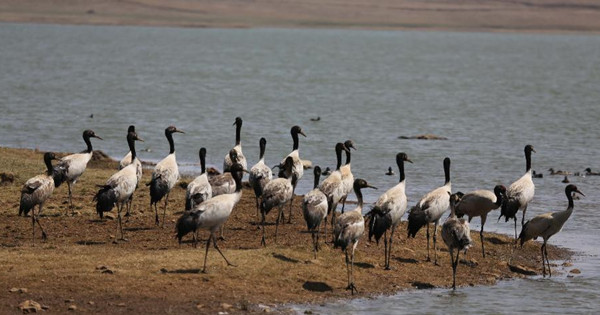
There are seven designated nature reserves in Yunnan Province's Zhaotong Prefecture, covering a total area of 438 square kilometers, and 2 percent of the prefecture's territory. Five of the preserves are registered as provincial-level protection sites, but only three have regular budgets. Reserve managers have conducted some public education work, but have no funds to devote to data collection, wildlife monitoring, resource inventory or reporting. No money is available, for example, to buy equipment such as cameras and binoculars.
Among the seven reserves, four have full-fledged reserve management offices; simple Forestry Stations handle the other three.

Management capability is a major weakness. The Zhaotong reserves urgently need to set up systems to monitor the growth and decline of wildlife resources, even while streamlining large general administration staffs. A wildlife survey was conducted in the reserves in 1999 at the request of the Provincial Forestry Bureau. But aside from that one-time initiative, limited budget and technical staff resources have meant that little detailed animal and plant census work has been conducted. As a result, the actual status of wildlife populations in the reserves is quite uncertain, even though the reserves cover key habitats for such high-profile endangered species such as black bears, clouded leopards and black-necked cranes.
A "first class protected species," black-necked cranes winter in the Wulianfeng Mountain area of Zhaotong Prefecture from early November to early April, residing in high elevation wetlands, including swamps, marshy pastures, reservoirs and pools, at altitudes ranging from 2,200 to 3,300 meters. A synchronized headcount at several localities in January 1998 found 1,332 birds. But a repeat count two years later tallied only 808 birds.
In order to try to help protect this endangered species, Zhaotong Prefecture established the Dashanbao Black-Necked Crane Nature Reserve in 1990, covering all 192 square kilometers of Dashanbao Township. Four staff members are assigned the task of wildlife protection and reserve maintenance in the Reserve. At RMB 50,000 (USD 6,000), reserve funding for 1999 was the highest yet (many reserves set up after 1992 in fact have no funding at all). Still, about 70 percent of the budget is absorbed by salaries. Reserve staff share a telephone with the township administrative office. Road conditions in this region are said to be among the worst in Yunnan, but road improvement projects have been suspended until more funding becomes available.
Local experts report that difficult economic and geographical conditions in Danshanbao Township greatly complicate the task of wildlife conservation. Wildlife share this highland region (average altitude 3,100 meters) with farmers and herders. The scarcity of non-mountainous land creates considerable pressure to exploit remaining wetlands for agriculture. The township has only 30 square kilometers of (sloping) farmland and 50 square kilometers of grassland, enabling the township's 15,000 people to squeeze out an income of roughly RMB 445 (USD 54) per person per year, mainly from buckwheat, oats and potatoes, along with pigs and goats. Every year, the provincial government must provide about 200,000 to 250,000 kilograms of relief grain to Dashanbao Township. The local farmers use peat as fuel and also for building houses. It is estimated that a five-member family uses about 15 tons of peat per year for fuel, a practice which also seriously damages the wetlands vital to the black-necked crane.
Voluntary relocation of people away from the township reserve is a key strategy for the local government in tackling its dual goals of poverty alleviation and reserve management. Starting in 1998, the Yunnan Provincial Poverty Alleviation Office has developed a plan to move 876 people away from core black-necked crane habitat areas in the township to Simao Prefecture in Yunnan, based on the promise of the provincial government providing RMB 10,000 (USD 1,209) per person to pay for relocation, including the preparation of infrastructure in Simao. The response has generally been positive, with many families registering for relocation, and construction work in Simao is underway. About 30 families have refused to move to Simao's lower elevations and asked instead to be relocated within Dashanbao. No funding is available, however, for relocation within the township.
Admission Fee:¥0

You will only receive emails that you permitted upon submission and your email address will never be shared with any third parties without your express permission.
